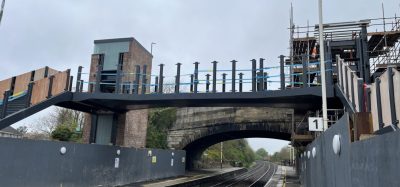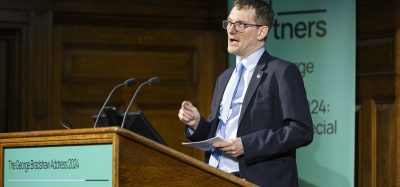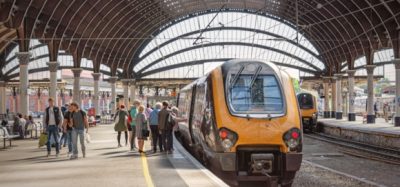Attack is the best form of defence
Posted: 6 February 2007 | | No comments yet
Operating a small rail network has its moments. Instead of being forced to go after huge parts of the European market to maintain competitiveness and thus being expected to operate a fleet of thousands of locomotives and coaches, a comparatively small railway company, such as CFL, enjoys the luxury of being able to invest into a few select areas, allowing them to micromanage and thus excel in them.
Operating a small rail network has its moments. Instead of being forced to go after huge parts of the European market to maintain competitiveness and thus being expected to operate a fleet of thousands of locomotives and coaches, a comparatively small railway company, such as CFL, enjoys the luxury of being able to invest into a few select areas, allowing them to micromanage and thus excel in them.
Operating a small rail network has its moments. Instead of being forced to go after huge parts of the European market to maintain competitiveness and thus being expected to operate a fleet of thousands of locomotives and coaches, a comparatively small railway company, such as CFL, enjoys the luxury of being able to invest into a few select areas, allowing them to micromanage and thus excel in them.
For instance, in less than two years, CFL have managed to completely replace their passenger fleet with modern double-decker material. Results from this speedy modernisation project could be felt straight away. Customer satisfaction got a substantial boost, not only from the fact that our new fleet is more comfortable than ever before. New engines and new rolling stock obviously offer more reliability and less downtime, making it easier to meet our requirements on punctuality, which is now at an all-time high.
Unfortunately we are not yet through with modernisation. While the modern fleet added 50% capacity to all our trains and enabled us to increase yet again the number of trains per day, it also brought rapidly rising passenger numbers as the newly available seats on our trains were filled in record-time. Due to Luxembourg’s unique geographical situation (all of CFL’s railway lines converge in Luxembourg), we are experiencing challenges which were purely fictional only a few years ago. The layout of our main terminal dates back to the early post-war era and Luxembourg Central Station is having some trouble coping with the number of passengers arriving at rush hour.
The rebuilding of the interior of this particular train station is rapidly progressing. Instead of a single, rather narrow, subway tunnel connecting all of the different platforms, Luxembourg will offer by the end of 2007 two wide and modern tunnels, equipped with elevators for easy wheelchair access to every platform. Only one year later, our customers will benefit by a 21st Century main hall made mainly from glass which will flood the area with natural light. In the meantime, the surroundings of the terminal are being remodelled more carefully, as the building itself is a historical landmark of the capital. Due to careful planning, tailbacks at the subway for the customers of Luxembourg’s public transport will be eliminated over the next few years; nevertheless we are sure to be victims of our own success. For this reason we are planning a new terminal on Kirchberg – close to all the major banks and European Institutions in the capital. Connected to Luxembourg Central Station via Findel-Airport, we expect this new station will help us manage the expected growth in passenger numbers for at least half of this century.
Currently, the train station is not the only major building-site operated by and for CFL in Luxembourg-city. In 2004, a project began to merge our locomotive depot and workshop into a single site and the project is currently progressing well. Aimed at simplifying the maintenance of our fleet and being able to offer maintenance contracts to foreign and future operators, the merger will be our stepping stone into a new promising market. As a small company, but advancing to become more and more efficient, we expect to be able to establish ourselves rapidly in this niche.
As public transportation is by definition a public and political matter, CFL in their role as the national rail operator are expected to significantly participate in the national 25-year development plan to manage expected population and industrial growth inside Luxembourg, called ‘mobilitéit.lu’. The main challenge of this project is to achieve a modal split of 25/75, i.e. 25% of all journeys made inside, to or from Luxembourg, should be made by public transportation or on foot. While this may not seem like much, in reality it is a huge feat for the country due to the large amount of personal cars. So far, the average Luxembourgian is reluctant to give up his every-day car journeys and consider using public transport to commute to and from work. Also, off-peak train journeys need to be more enticing to gain extra passengers. Offering more, faster and better connections nationwide is an attractive and appealing feature which CFL need to deploy.
To achieve this, CFL are constantly improving their network. Not only have we created two additional train stations to our network, both of which are in the vicinity of newly built grammar schools, we have also cooperated with SNCB to reopen two railroad lines between Belgium and Luxembourg which have been closed to traffic for many years. Integrated into CFL’s timetable, line n°80 which runs between Arlon (B) – Rodange (L) and Virton (B), we are confident that many Belgian commuters will gladly profit from the additional offer to escape the dreaded tailbacks on the motorway.
With the development of the ‘Industriebrochen’, the former industrial site in Belval, into a completely new part of town with its own grammar school and several banks and light industries, CFL have been invited to upgrade the existing rural train halt. We have of course risen to the challenge and in October 2006, we presented our version of an almost avant-garde terminal. Construction is already underway and the caterpillar-like structure should be operational as early as 2009.
Another angle of attack on achieving the projected modal split is to adapt our network to handle a greater number of trains. Between Pétange and Luxembourg we are working on eliminating a major choke point on our network by converting the line from mostly single-lane to double-lane tracks. Construction on this project began in mid 2004 and has progressed as planned; in fact we are halfway through the project and we expect the double-lane to be completely operational by the end of 2009.
The extension of the national network from Luxembourg-City to Luxembourg-Airport is still in its planning phase, but the main points have already been agreed on. To eliminate the choke point on the ‘Pulvermühle’ viaduct, a third and fourth lane will be added to the existing double-lane line by building a sister bridge next to the original structure. As the viaduct is a listed building, this extension will have to be engineered with utmost care so as not to disturb the aspect of the original building.
Culmination of one of the more exciting CFL projects of recent years will, at the time of publication of this article, be only weeks away. As of 10 June 2007, Luxembourg will have direct access to the European high-speed railway with five high-speed TGV connections to and from Paris per day. There have already been four TGV trains circulating per day between the two capitals before, but only at regular speeds. Nevertheless, the TGV-effect on our customers has already been substantial and another popularity boost of rail bound transportation is to be expected.
CFL are not entirely and solely focussed on carrying passengers; a major part of our operations are in the freight business. As we have shown before, we are willing to profit as much as possible from liberalisation in our sector and are confidently looking at all the opportunities presenting themselves.
One major step in securing our situation and affirming our desire to keep our market share, has been the creation of CFL-Cargo in October 2006 – a joint-venture between Arcelor-Mittal, the biggest steel manufacturer in the world, and ourselves. The newly created subsidiary of CFL which has been built on the foundations and experience of EuroLuxCargo will be able to play an important role in freight-transportation in the greater Saar-Lor-Lux area and beyond.
Of course CFL’s and CFL-Cargo’s geographical situation in the heart of Europe and on the main axis between Antwerp and northern Italy is one bonus that few other companies can claim for themselves. In this context it should be noted that cooperation between national carriers bordering this axis is assured through Sibelit, which CFL, next to SBB, SNCB and SNCF are founding members of. As a result, we are both confident and ambitious enough to defend our acquired situation as a good all-round and highly competitive operator in the Saar-Lor-Lux area and a reliable partner beyond. Our strategy of investing into the greater Luxembourg region and into new market opportunities has so far paid off and will of course be continued.
About the author
Alex Kremer studied at the Université de Liège and the TH Aachen. Following practical training with DB, he joined CFL where his career took him through the departments of infrastructure and human resources which he headed for a number of years before being promoted to Directeur Général (CEO) of CFL in 2001.






